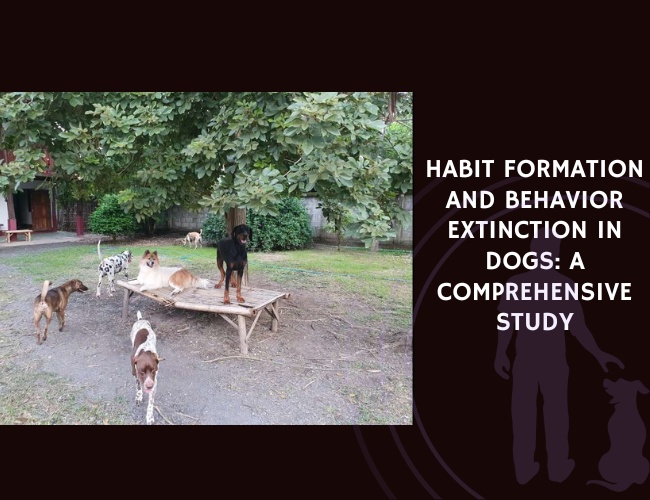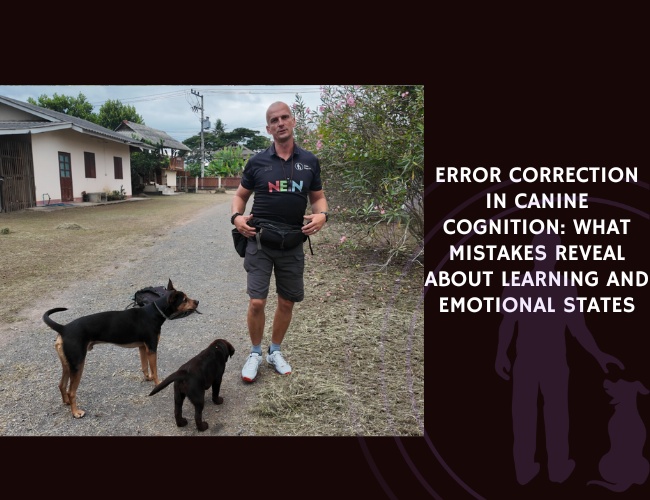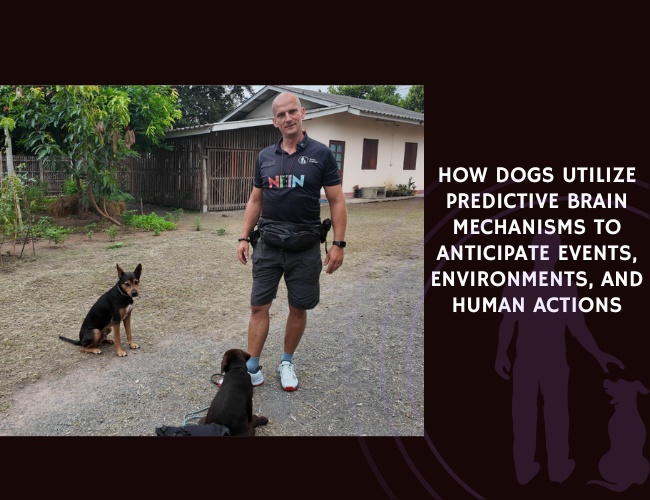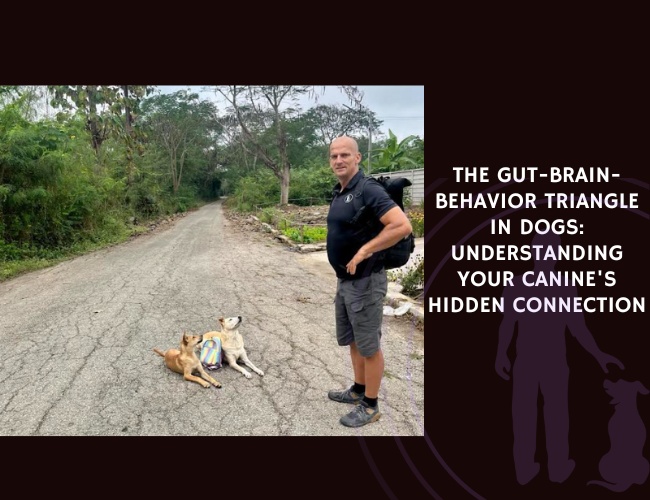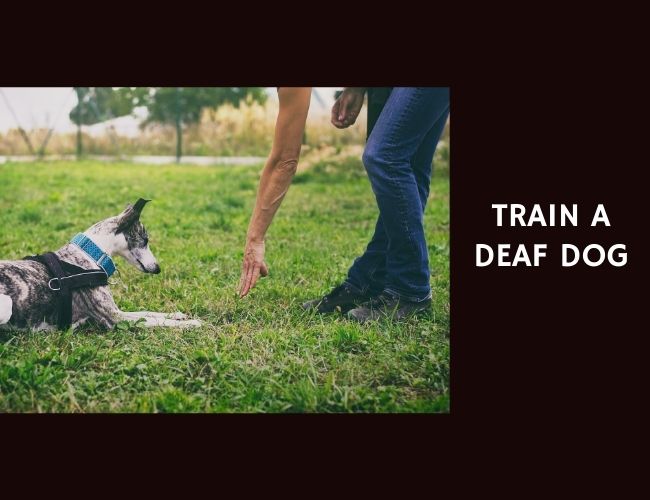Introduction to Canine Habit Formation
Purpose and Scope
This study takes a close look at how dogs develop habits and how these habits can be changed or removed. By exploring both psychological and neurological aspects, it aims to help owners and trainers better understand why dogs act the way they do and how behavior can be shaped through training. The goal is to bridge science and daily practice, so that everyone working with dogs can use methods that are both effective and gentle.
The Value of Understanding Habits
Knowing how habits form in dogs is very important for training success. Habits are not simply behaviors that dogs choose to do; they are automatic actions that happen almost without thinking. Once formed, a habit can be hard to break unless the right strategies are used. With this knowledge, owners can help their dogs gain good habits—like sitting politely or walking calmly—and avoid or reduce unwanted behaviors.
Neurological and Psychological Building Blocks
Inside a dog’s brain, special areas like the basal ganglia and reward systems play big roles in habit formation. When a dog repeats a behavior and gets a reward, such as a tasty treat or praise, pathways in its brain become stronger. Over time, these actions become second nature. Neurologically, dogs respond to both cues in their environment and to the patterns of reward created by people. Psychologically, repetition, consistency, and the right kind of feedback help a dog learn what is expected.
Understanding these processes lays a strong foundation for anyone wishing to bring out the best in their dog through kind and informed training practices.
Defining Habits in Dogs
What is a Habit in Dogs?
A habit in dogs is best described as an automatic, repetitive behavior that occurs with little conscious thought. Once established, these behaviors do not easily change and are often triggered by specific situations or environmental cues. For example, a dog might always sit when it hears the sound of its food bowl. This is not just simple obedience—it is a pattern learned through repeated practice in that context.
Building Strong Neural Pathways
Habits form in the brain by strengthening connections between nerve cells. Each time a dog repeats a behavior, these neural pathways become stronger, much like a well-worn path in a forest. Repetition and reinforcement—such as getting a treat or praise—are key. The more often a behavior leads to a rewarding outcome, the more likely the dog is to repeat that behavior automatically. Over time, even minimal rewards can keep the habit going, as the brain expects the outcome and responds almost on autopilot.
The Power of Context and Environment
Contextual cues play a vital role in shaping and maintaining habits. Dogs are highly sensitive to their surroundings and routines. If a dog barks every time the doorbell rings, the sound of the bell becomes a strong cue for that behavior. Consistency in the environment helps dogs solidify habits faster. When the same behavior is practiced in the same setting, habits become more ingrained and less flexible. Changes in routine or environment can sometimes disrupt established habits, making them easier or harder to change depending on the situation.
Understanding these basic principles gives us the tools to both build good habits and change unwanted behaviors in dogs, setting the stage for a deeper look at the brain’s role in this process.
The Neuroscience Behind Habit Formation
Key Brain Pathways and Circuits
Habit formation in dogs relies on specialized neural systems. The basal ganglia, a group of deep brain structures, play a leading role in turning repeated actions into automatic habits. The dopaminergic reward system works alongside the basal ganglia. Dopamine is a chemical in the brain that signals pleasure and rewards. When a dog receives a reward after performing a behavior, dopamine is released. This creates a positive feeling and makes the brain more likely to repeat that action again. Over time, the connection between the cue, behavior, and reward becomes stronger.
The Cue-Routine-Reward Loop
At the heart of habit formation is a simple pattern called the cue-routine-reward loop. First, a cue or signal from the environment occurs. This could be a doorbell ringing or a leash being picked up. The cue triggers the routine, which is the behavior itself, like barking or sitting. If the routine leads to something rewarding, such as a treat or praise, the brain records this. Repeating this loop strengthens the neural pathways, making the response automatic. With time, dogs respond to the cue without much thought or effort, as the behavior becomes ingrained.
Changes in Neural Plasticity Over the Lifespan
Neural plasticity refers to the brain’s ability to change and adapt as a result of experience. In dogs, plasticity is highest when they are young, which is why puppies tend to learn new habits more quickly and easily. As dogs grow older, plasticity decreases. This means older dogs might require more time and repetition to build or replace a habit. However, with patience and consistent training, even senior dogs can learn new behaviors.
Understanding these brain processes provides the foundation for using training techniques that are both effective and humane. By making use of reward-based cues and routines, we can help shape positive habits that last a lifetime.
Learning Mechanisms: Pavlovian and Operant Conditioning
Building Associations through Pavlovian Conditioning
Pavlovian conditioning, also known as classical conditioning, is a core way dogs learn new habits. It works by pairing a neutral stimulus—something the dog has no reaction to at first—with something the dog enjoys, like a tasty treat. Through repeated pairings, the dog begins to associate the neutral cue with the positive event. For example, if the sound of a bell is always followed by a meal, the dog will eventually get excited just hearing the bell. This kind of learning builds anticipation and helps dogs predict when something good will happen, making it easier to shape calm and desired responses in everyday situations.

Operant Conditioning: Consequences Shape Behavior
Operant conditioning focuses on the idea that behaviors have consequences. In dog training, actions that lead to rewards—like a treat, a favorite toy, or praise—are more likely to be repeated. On the other hand, behaviors followed by a lack of reward or a mild consequence become less likely. For instance, if a dog sits and receives a treat, the sitting behavior gets stronger. If jumping up on people means getting ignored, that behavior will weaken over time. This method empowers trainers and owners to encourage good manners while gently discouraging unwanted habits.
The Cue-Routine-Reward Loop in Action
Both learning types come together when a dog learns a habit. First, a cue in the environment triggers the routine—what the dog does automatically—and then the reward follows. Over many repetitions, this loop becomes ingrained in the dog’s brain as a habit. With consistent cues and rewards, even complex behaviors become second nature for dogs. Importantly, these principles work best during a dog’s early years, when their brain is especially flexible, but they are still effective for all ages with patience and ongoing practice.
Understanding these learning mechanisms lays the foundation for more effective and compassionate training practices, allowing both dog and owner to thrive together.
Factors Influencing Habit Formation Timeline
Understanding why some habits develop in dogs quickly while others take time involves looking at several key factors. Each dog and each behavior are unique, making the process both fascinating and deeply individual.
Complexity of the Behavior
Not all habits are built at the same speed. Simple habits, like sitting on command, tend to form much faster than more complex behaviors such as retrieving objects or ignoring distractions outside. Complex actions require more steps and involve greater decision-making from the dog, so repetition and patience are essential for mastery.
Reinforcement Strength and Consistency
Strong and consistent rewards can rapidly build habits. If a dog consistently receives a high-value reward, like a favorite treat or extra playtime, right after performing a desired action, the associated neural pathway strengthens quickly. However, if rewards are unpredictable or delayed, it may confuse the dog, slowing down learning and the path to a reliable habit. Consistency in training sessions—using the same cues, routines, and rewards—improves learning speed and creates a clearer connection in the dog’s brain.
Influence of Age, Breed, and Cognitive Abilities
A dog’s age, breed, and cognitive ability all influence how quickly a habit is formed. Younger dogs, especially puppies, have more neural plasticity, making it easier for them to learn and adapt to new habits. Some breeds are naturally more responsive or eager to work, while others may require extra motivation. Cognitive ability, which includes attention, memory, and problem-solving, also plays a role; dogs with keen cognitive skills tend to pick up habits with fewer repetitions.
Recognizing these influences helps owners tailor their training approach, ensuring dogs build healthy habits effectively. As we turn to understanding what happens when these habits fade, it is important to consider both the building and the breaking of behavior patterns.
Understanding Behavior Extinction
What Is Behavior Extinction in Dogs?
Behavior extinction in dogs is the process where a learned behavior weakens or disappears because it is no longer reinforced. Simply put, when a behavior—such as jumping or barking—stops leading to a reward or reaction, the dog will gradually stop doing it. This weakening happens because the dog learns that repeating the action does not bring any benefit. Extinction is a core concept in modern dog training and rehabilitation, helping owners and trainers shape a dog’s behavior in a lasting and gentle way.
Common Phenomena During Extinction
While extinction may sound straightforward, it often comes with some challenges. Three typical reactions can occur:
- Frustration: Dogs may show confusion or agitation when a behavior that once earned them a treat or attention no longer does so.
- Spontaneous recovery: After a break, the unwanted behavior can suddenly reappear, often briefly, before fading again.
- Extinction bursts: At first, the dog might perform the unwanted behavior even more intensely or often before the behavior starts to weaken.
These responses are normal. Understanding and preparing for them helps owners remain patient and consistent, leading to better results.
Why Are Some Habits Harder to Extinguish?
Some habits in dogs are more resistant to extinction than others. This resistance often depends on how strongly the behavior was reinforced in the past. Behaviors that have strong emotional value or have been rewarded many times create deeper neural pathways, making them harder to change. The context and consistency of previous rewards also play a part. For example, if a dog only sometimes received a treat for a particular action, they might repeat the behavior longer, hoping for another reward.
Recognizing these patterns equips owners to handle the extinction process with empathy and perseverance. With this foundation, we can better explore practical approaches to changing unwanted habits in dogs.
Cue. Repeat. Fade.
Habits Are Built, Not Chosen
Dogs don’t “decide” to misbehave—they follow patterns. Repetition and reward shape the brain. Whether it’s jumping, barking, or calmly sitting, each habit is wired through cue-triggered behavior loops that grow stronger with use.
Rewiring Behavior with Precision
The same brain that forms bad habits can unlearn them. By removing reinforcement or replacing a behavior with a better one, you weaken old patterns and build healthier alternatives. Expect extinction bursts, stay consistent, and trust the process.
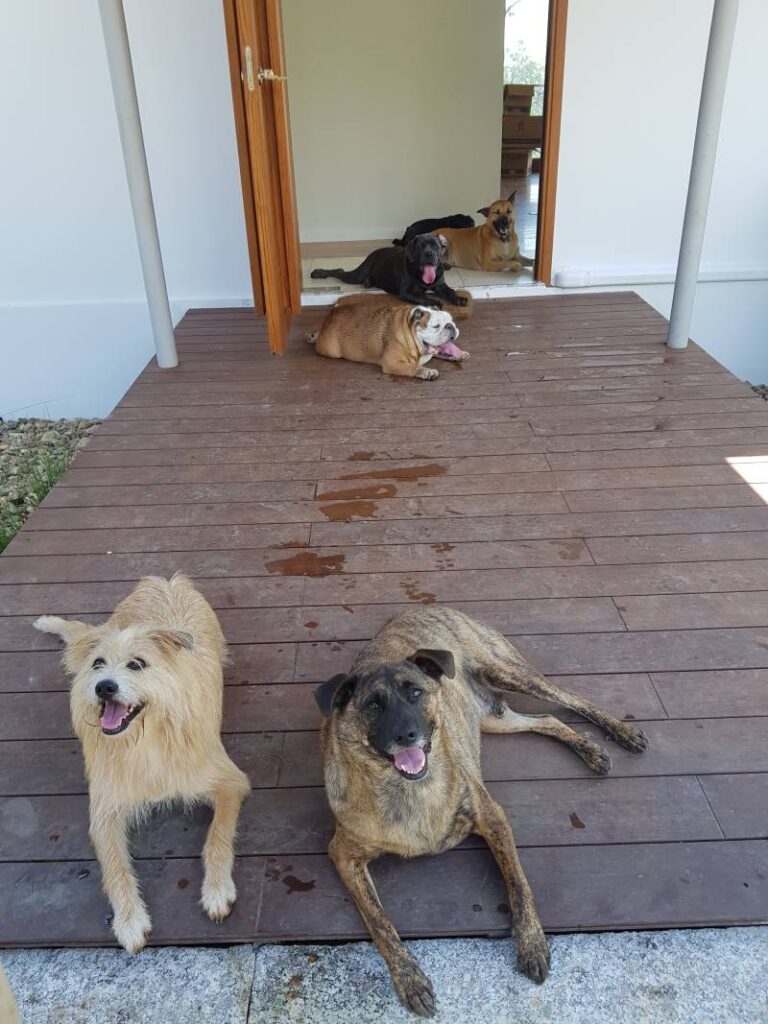
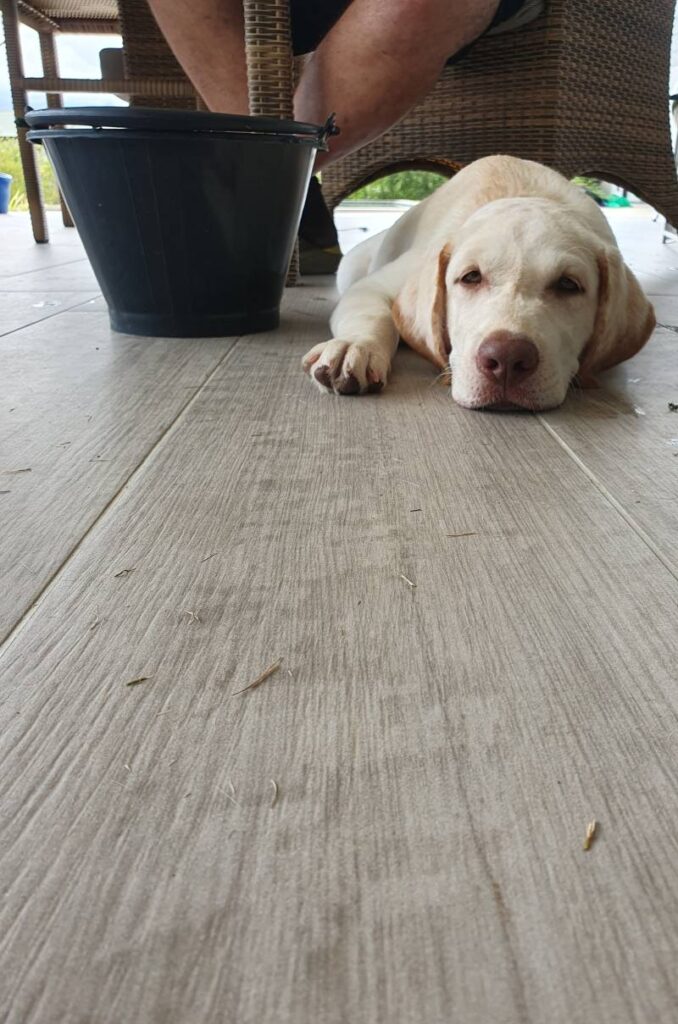
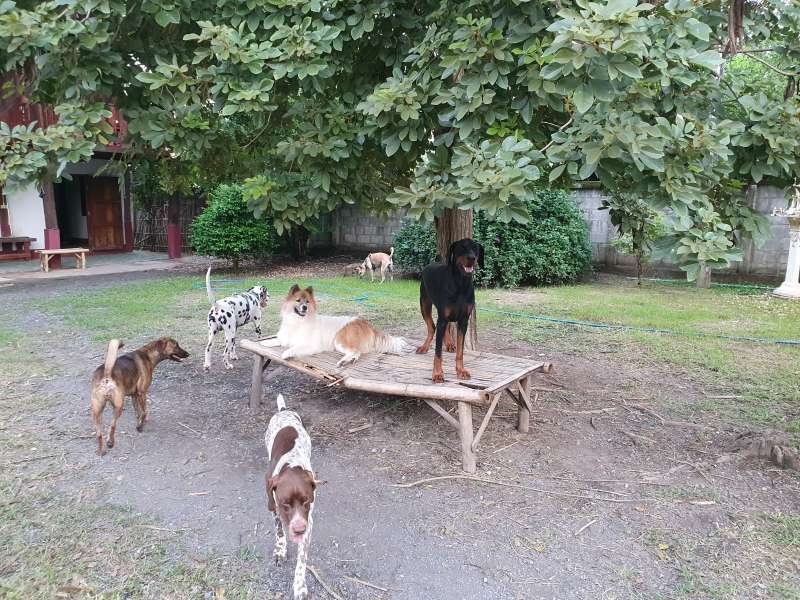
Science Creates Success
From basal ganglia circuits to dopamine feedback, the neuroscience of habit shows: timing, clarity, and repetition matter. When you train with intention—not just reaction—you don’t just change behavior. You change how the dog learns.
Effective Strategies for Behavior Extinction
Counter-Conditioning for Positive Associations
Counter-conditioning is a kind and effective way to change how a dog feels about a trigger or cue. The goal is to pair the cue linked to an unwanted habit with something positive, like a tasty treat or a favorite toy. For example, if a dog reacts fearfully to the doorbell, you can pair the doorbell sound with special treats. Over time, the dog starts to expect good things from the trigger instead of reacting negatively. With patience and repetition, this method builds new, positive associations in the dog’s mind.
Gradual Desensitization
Desensitization is about slowly exposing your dog to the thing that causes the unwanted behavior, but in a way that does not overwhelm them. You start with the cue at a very low level—so low that it does not cause a reaction. For example, if your dog barks at strangers, have a person stand far enough away that your dog stays calm. Once your dog is comfortable, slowly decrease the distance. By gradually increasing the challenge as your dog remains calm, their unwanted response becomes less frequent and less intense.
Differential Reinforcement of Alternative Behaviors (DRA)
Differential reinforcement of alternative behaviors (DRA) means you reward a better or incompatible behavior whenever it appears instead of the unwanted one. If a dog jumps on guests, you can teach them to sit for attention. Each time they sit, offer praise or a small treat. The key is quick, consistent rewards, so the healthy behavior becomes the dog’s new habit. Over time, the reward for the new action makes the old problem fade away.
Consistency and good timing are crucial across all these strategies. By being clear and regular in your responses, you help your dog understand what is expected. This approach not only increases success but also strengthens the bond you share with your companion.
With these methods in place, the journey to better habits becomes more positive and achievable for both you and your dog.
Practical Applications in Dog Training
Addressing Common Behavioral Issues
Dog owners often encounter behaviors like excessive barking, resource guarding, jumping, and leash pulling. Each of these actions is rooted in habit and can be addressed by science-backed strategies. For instance, when a dog barks for attention and the owner responds, the action is reinforced. Ignoring the barking and instead rewarding calm, quiet behavior helps weaken the barking habit and builds a more desirable response.
Resource guarding can be redirected using counter-conditioning, which means you help the dog build new, positive associations around the guarded resource. By calmly approaching while offering a treat, and rewarding relaxed behavior, dogs learn there is no need to protect resources aggressively.
Jumping on guests is another common concern. Consistent ignoring of this behavior, paired with rewarding calm greetings, teaches dogs that only polite behavior earns attention.
With leash pulling, rewarding loose-leash walking—using treats or praise whenever the leash stays slack—encourages dogs to repeat this preferred behavior.
Applying Extinction in Real-World Training
Behavior extinction relies on removing the reinforcement that maintains an unwanted habit. Dogs may show a brief burst of the old behavior before improvement happens. Consistency is key. If a behavior is ignored sometimes but not always, it sends mixed signals, slowing progress. Pairing extinction with positive reinforcement for alternative actions, like sitting instead of jumping, speeds up habit change and makes results more reliable.
Consistency and Timing Considerations
Timely feedback strengthens learning. It is important to reward or withhold reinforcement immediately after the behavior occurs. The more predictable and prompt your reactions, the faster your dog learns what is expected.
Owners play a crucial role by maintaining patience, staying aware of unintentional rewards, and using clear, gentle cues. These compassionate, science-based methods build trust and make the training process more effective and enjoyable for both dog and owner.

The Owner’s Role in Habit Management
Understanding Unintentional Reinforcement
Owners play a crucial role in shaping and maintaining their dog’s behavior. Often, unwanted habits persist because owners unknowingly reinforce them. For example, giving attention, speaking, or touching a dog when it jumps or barks sends a signal that these behaviors are effective in gaining your response. Even a simple glance or a laugh can become a reward for your dog, making it more likely they will repeat the behavior in the future. Consistency is key—if an unwanted action is sometimes rewarded and sometimes ignored, the habit will become harder to change.
Clear Communication and Consistent Responses
Dogs thrive when they understand their owner’s expectations. Clear, consistent communication helps guide them toward the right behaviors. This means responding the same way every time an unwanted habit occurs and being mindful not to accidentally reward the behavior. Owners are encouraged to use simple cues and ensure all family members or caregivers use the same words and actions. Mixed messages create confusion for dogs, making it harder for them to learn which behaviors are appropriate.
The Impact of Emotional Tone and Body Language
Dogs are very sensitive to human emotions and body language. Your tone of voice, posture, and facial expressions all contribute to how your dog interprets your reactions. A calm, steady approach is more effective than reacting with frustration or excitement. Sudden emotional responses—such as shouting—may scare or confuse your dog, or, in some cases, inadvertently reward the behavior. Maintaining a composed demeanor while offering feedback helps your dog learn in a safe and supportive environment.
By understanding how everyday actions influence a dog’s habits, owners can build stronger, more positive partnerships with their canine companions, setting the stage for better outcomes in training and behavior change.
Positive Reinforcement vs. Aversive Techniques
Understanding Reward-Based and Punishment-Based Approaches
When training dogs, the method you use shapes your dog’s habits and well-being. Positive reinforcement involves rewarding your dog for desired behaviors. This might mean giving treats, praise, or play after your dog performs a wanted action. Over time, these rewards make the good behavior more likely to happen again. In contrast, aversive techniques use unpleasant consequences—such as yelling, physical corrections, or other negative experiences—to decrease unwanted behaviors.
Effectiveness of Each Approach
Studies show that positive reinforcement leads to faster and more reliable extinction of unwanted habits. Reward-based training creates a positive environment for learning, which helps dogs understand expectations without fear or confusion. Dogs are more motivated to learn, and their trust with their owner grows. On the other hand, punishment-based approaches may stop a behavior in the short term, but they can create new problems. Aversive techniques might cause fear, anxiety, or even aggressive responses in dogs, which can damage the human-animal bond and make training more difficult over time.
Potential Negative Outcomes of Aversive Methods
Using intimidation or punishment can have side effects. Dogs may become fearful, anxious, or withdrawn. In some cases, punished dogs may start to show aggression as a defensive response. These emotional reactions hinder learning and do not address the root cause of unwanted behaviors. Owners may find that behaviors return or new problems develop, leading to a negative cycle.
Building Stronger Relationships with Rewards
Positive reinforcement not only changes behavior but also strengthens the bond between owner and dog. This approach helps dogs feel safe and builds trust. A supportive relationship encourages better communication and more lasting results. For these reasons, reward-based techniques are seen as more effective and kind in guiding a dog’s behavior.
With this foundation, we can explore emerging insights and research gaps that continue to shape our understanding of effective dog training.
Future Research Directions
Need for Longitudinal Studies
Despite growing interest in canine habit formation, there are still key gaps in our knowledge. One of the main issues is the lack of longitudinal studies that track dog behavior over extended periods. Most current research provides only snapshots of how habits are formed or extinguished. Without long-term data, we do not know exactly how quickly habits develop or fade, or how consistent those patterns are across different breeds, ages, or environments. Studies that follow dogs from puppyhood through adulthood would help us understand the changes and critical periods in habit development.
Gaps in Current Understanding
Much of what is known comes from general observations or controlled laboratory settings, which may not fully reflect the diversity of real-life dog environments. Specific timelines for how long it takes dogs to form or break habits remain unclear, especially when considering factors like behavior complexity or emotional value. The influence of individual differences, such as breed, age, and cognitive ability, is recognized but not yet fully detailed. Filling these gaps requires not just more studies, but ones that use consistent methods and focus on measuring habits in naturalistic, everyday scenarios.
Toward Better, Evidence-Based Training
Understanding habit dynamics more deeply will allow the creation of more effective and humane training protocols. Future research should compare long-term outcomes from positive reinforcement and aversive techniques, to better understand their impact. It is also important to test training methods across a wider range of canine personalities and living situations. By closing these knowledge gaps, the field can offer stronger support and clearer guidance to dog owners and trainers who want the best for their companions.
Continued study in this area will provide a clearer picture of canine behavior and improve practical strategies for everyone involved in dog care.
Conclusion: Applying the Science of Habit Formation
Key Takeaways on Habit Formation and Extinction
Understanding how dogs form and lose habits is essential for anyone seeking to nurture positive behavior. Habits in dogs are repetitive, automatic actions shaped by both the environment and the brain’s reward systems. The basal ganglia and dopaminergic pathways help dogs repeat helpful actions when those actions are met with rewards. Creating a routine and providing consistent cues strengthen these neural pathways, making good habits stick.
When it comes to changing unwanted behavior, removing the reward—what scientists call “extinction”—weakens the habit. However, this process is often marked by temporary challenges such as frustration or a sudden increase in the undesired behavior. This means patience and consistency are especially important during training.
Practical Insights for Owners and Trainers
For owners, the journey does not stop at understanding the science—it extends to practical daily actions:
- Be consistent with rewards and responses.
- Avoid reinforcing unwanted habits by mistake (e.g., giving attention when a dog barks).
- Use reward-based training like treats or praise whenever the dog behaves as desired.
- Gradually expose your dog to challenging situations using desensitization.
- Replace negative behaviors with positive alternatives and reward them.
Maintaining a calm tone and clear communication helps reinforce learning. Owners play a crucial role in either building or breaking habits.
The Value of a Science-Based Approach
Relying on evidence from neuroscience and psychology leads to more effective and humane dog training. Positive reinforcement does not only make new habits more reliable—it also strengthens the bond between you and your dog, while reducing the risk of fear or anxiety.
By applying these principles, you can support your dog’s healthy emotional development and help them feel safe as they learn new behaviors.

